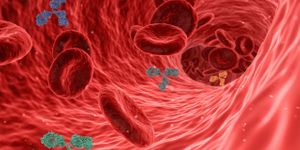As imaging tools continue to get more sophisticated, researchers have been able to actually watch biological processes as they are happening in live cells. Scientists have now visualized loops of DNA molecules and seen the three-dimensional structure of these loops. Active genes have to be copied from the DNA molecule into mRNA molecules that the cell can use to generate proteins. This research has helped the investigators learn more about how the transcription of RNA affects DNA. The study, which has been reported in Molecular Cell, has suggested that RNA transcription has an influence on the architecture of the genome, and that the process creates forces that ripple through DNA.

When genes are transcribed, the double strand of the DNA molecule has to be 'unzipped,' which alters its three-dimensional form and overtwists or supercoils downstream portions of the molecule. This new research has shown that when DNA is supercoiled, structural proteins known as cohesins can surf across DNA strands, which alters the structure and changes the genome's shape. In this work, the scientists used high-powered miscoscopy to visualize chromatin loops and cohesins holding the structure together inside of cells.
DNA has to be carefully organized and packaged so it will fit into the nucleus of cells; compacted DNA that's been organized with other proteins is known as chromatin. The structure of the genome can influence gene expression because active genes have to be physically accessible to the cell's transcription machinery. Chromatin contains loops that can connect parts of the genome that may be very far apart in the DNA's linear sequence. Transcription also seems to be bringing certain parts of genome together.
Some genetic disorders are associated with mutations in genes that code for cohesin or proteins that regulate it, as well as errors in chromatin folding. This study may help scientists learn more about these diseases.
"What we have found is important because it shows the biological process of transcription plays an additional role beyond its fundamental task of creating RNA that eventually turn into proteins. Transcription indirectly compacts the genome in an efficient manner and helps different regions of the genome talk to each other," said first study author Vicky Neguembor, a Staff Scientist at the Centre for Genomic Regulation.
Sources: AAAS/Eurekalert! via Center for Genomic Regulation, Molecular Cell


